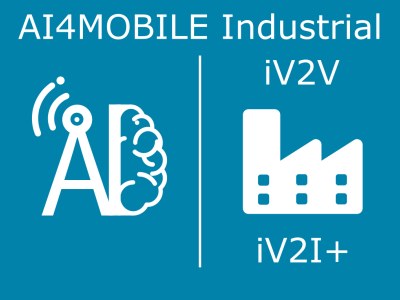Berlin V2X

- Citation Author(s):
-
Philipp Geuer (Ericsson Research)Alexandros Palaios (Ericsson Research)Daniel Schäufele (Fraunhofer Heinrich Hertz Institute)Cara Watermann (Ericsson Research)Khawla Taleb-Bouhemadi (Fraunhofer Heinrich Hertz Institute)Mohammad Parvini (Vodafone Chair, Technische Universität Dresden)Anton Krause (Vodafone Chair, Technische Universität Dresden)Sanket Partani (Technische Universität Kaiserslautern)Christian Vielhaus (Deutsche Telekom Chair, Technische Universität Dresden)Martin Kasparick (Fraunhofer Heinrich Hertz Institute)Daniel F. Külzer (BMW Group)Friedrich Burmeister (Vodafone Chair, Technische Universität Dresden)Frank H. P. Fitzek (Deutsche Telekom Chair, Technische Universität Dresden)Hans D. Schotten (Technische Universität Kaiserslautern)Gerhard Fettweis (Vodafone Chair, Technische Universität Dresden)Slawomir Stanczak (Fraunhofer Heinrich Hertz Institute)
- Submitted by:
- Rodrigo Hernangomez
- Last updated:
- DOI:
- 10.21227/8cj7-q373
- Data Format:
- Research Article Link:
- Links:
 5485 views
5485 views
- Categories:
- Keywords:
Abstract
The Berlin V2X dataset offers high-resolution GPS-located wireless measurements across diverse urban environments in the city of Berlin for both cellular and sidelink radio access technologies, acquired with up to 4 cars over 3 days. The data enables thus a variety of different ML studies towards vehicle-to-anything (V2X) communication.
The data includes information on:
- Physical layer parameters (such as signal strength and signal quality).
- Cellular radio resource management like cell identity, carrier aggregation and assigned resource blocks.
- Wireless Quality of Service (QoS) like delay and throughput (for cellular) or packet error rate (for sidelink).
- GPS-positioning information.
- Side information (traffic and weather).
The datasets are labelled and pre-filtered for a fast on-boarding and applicability. The measurement methodology pursues an application to Machine Learning (ML) for tasks such as QoS prediction, transfer learning, proactive radio resource allocation or link selection, among others.
Instructions:
The cellular and sidelink parquet files can be directly downloaded and read with Python using Pandas and parquet support via PyArrow or Fastparquet.
For detailed instructions, please refer to the BerlinV2X-README.pdf or the available documentation on GitHub.
Dataset Files
- cellular_dataframe.parquet (24.44 MB)
- sidelink_dataframe.parquet (25.27 MB)
- sources
- gps
- iperf
- mobile_insight
- pcap
- ping
- sidelink
- ue1_s1_0622.parquet (17.61 MB)
- ue1_s1_0623.parquet (19.08 MB)
- ue1_s2_0622.parquet (23.13 MB)
- ue1_s2_0623.parquet (33.67 MB)
- ue2_s1_0622.parquet (18.68 MB)
- ue2_s1_0623.parquet (19.1 MB)
- ue2_s2_0622.parquet (29.99 MB)
- ue2_s2_0623.parquet (39.35 MB)
- ue3_s1_0622.parquet (18.14 MB)
- ue3_s1_0623.parquet (19.16 MB)
- ue3_s2_0622.parquet (13.63 MB)
- ue3_s2_0623.parquet (19.75 MB)
- ue4_s1_0622.parquet (16.7 MB)
- ue4_s1_0623.parquet (17.89 MB)
- ue4_s2_0622.parquet (16.6 MB)
- ue4_s2_0623.parquet (30 MB)








